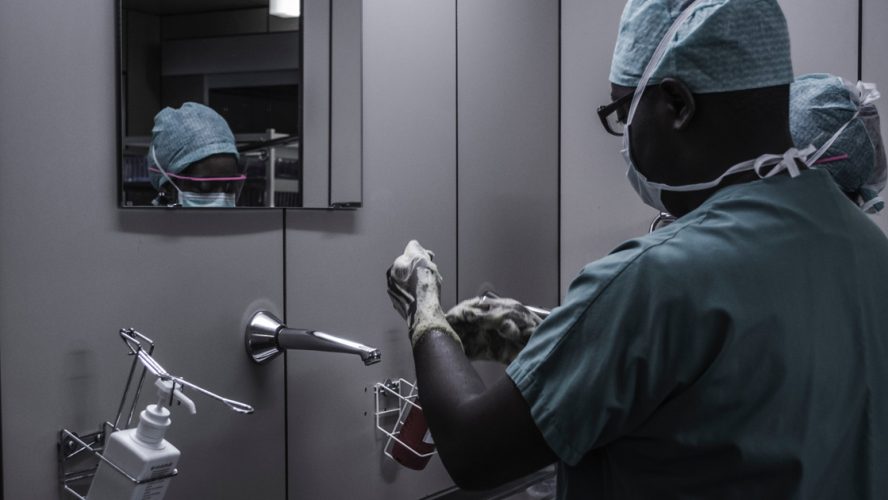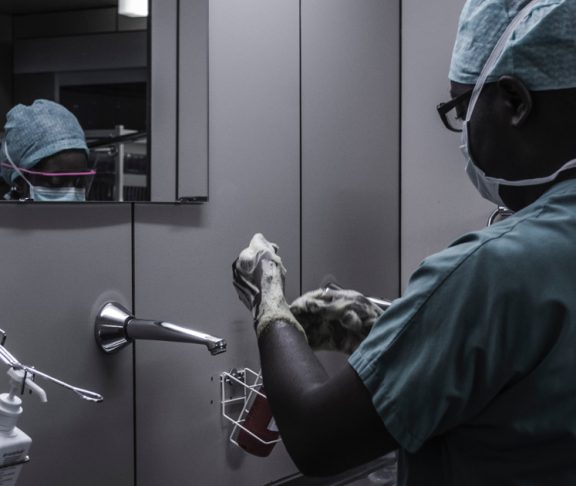
Dr Dougie Muir
Consultant Cardiologist, James Cook University Hospital
New developments in Transcatheter Aortic Valve Implantation have revolutionised the treatment of heart valve disease, saving more lives and reducing NHS costs.
There are people with heart valve disease who travel hundreds of miles to speak with Consultant Interventional Cardiologist, Dr Douglas Muir. That’s because Dr Muir and his hospital, the James Cook Hospital in Middlesbrough, are specialists in a procedure called Transcatheter Aortic Valve Implantation (TAVI).
In the procedure, people with a damaged heart valve receive a replacement valve, which is put in place using a tube the size of your little finger. The tube, with a collapsible ‘crimped’ replacement valve inside, is usually inserted under local anaesthetic into an artery running from the groin. Dr Muir explains: “A bit like putting a ship in a bottle”.
Some patients notice a difference immediately
People receiving the procedure transform from being so breathless that they can’t even walk across the room to planning coast-to-coast walks. Dr Muir says he’s had patients who say they feel completely different as soon as they sit up in bed.
AS can kill in under two years
Within 2-3 hours, the patient can be up in bed, and around 70% go home the next day.
Aortic Stenosis (AS) is one of the most common heart conditions affecting older people. Considered age-related ‘wear and tear’, the condition affects around one in ten 80-year-olds and is characterised by a narrowing of the heart valve. Left untreated, severe AS can kill within one to two years.
TAVI was introduced at the James Cook Hospital in 2009 and today, around one in five people with AS will be offered the procedure. Traditionally only those with the most severely damaged valves and at such high-risk as to be inoperable were given TAVI. However, as understanding of the procedure, and the technology, have improved, people who are lower surgical risk also now receive TAVI, compared to the past where only inoperable patients were eligible. It’s seen as a much less risky alternative to open heart surgery, which requires the chest to be cut open, full anaesthetic and the support of a surgical team and expensive stand-by equipment.
Hospital stay reduced from a week to a day
TAVI has also reduced the average post-operative hospital stay from a week to one day. “The local anaesthetic makes the big difference to recovery,” Dr Muir says. Within two to three hours the patient can be up in bed, and around 70% go home the next day. Complications and post-operative pain are also much improved.
Compared to traditional surgical approaches to this condition, TAVI has a higher up-front cost, but this is offset when you take into consideration the patient’s length of stay in hospital and use of resources, Dr Muir believes. He describes TAVI as “a win-win solution for everyone.”


